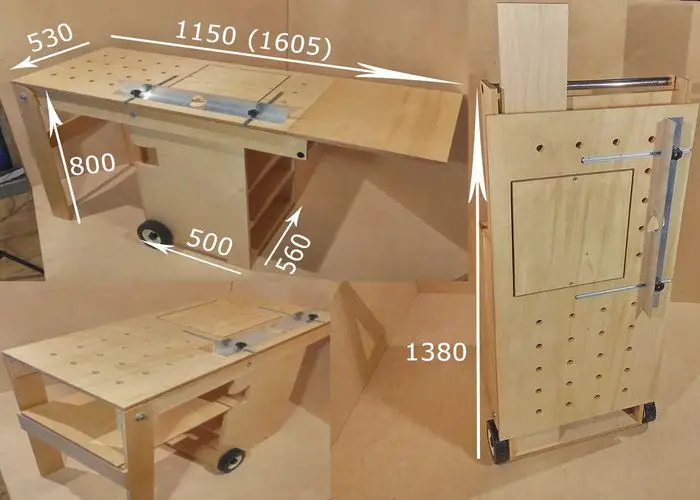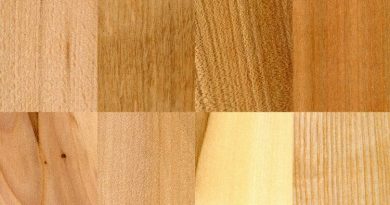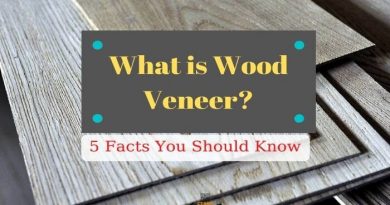What is the Perfect Height of a Workbench ?
No workshop without workbench! To repair or make parts, to cut panels and shelves, the workbench is your ally. But what is the ideal height of a workbench?
The ideal height for a workbench it should be between 36 “and 38” (90 cm to 96 cm). This height is ideal for the comfort of the user during light work.
Perfect Height of a Workbench:
1.For fine work – working height: 39″ (100 cm)
For fine work, such as drawing, you should have your elbows supported. This relieves the core muscles. Recommended workbench working height is approx. 2″ – 4″ (5 cm – 10 cm) above elbow height.
2.Easy work – working height: 36 ” (90cm)
For light manual activities, such as assembling or processing workpieces, a working height of around 4″ – 6″ (10 cm – 15 cm) below the elbow is recommended.
3.Heavy work – working height: 31″ (80cm)
For labor-intensive work such as heavy assembly work, sawing wood or planing, low working heights are more favorable. A working height of around 6″ – 15″ (15 cm – 40 cm) below the elbow is recommended.
Joiner or workbench is the necessary equipment that should be available in almost every workshop and can be purchase here.
With the help of this special table, the woodworker has the opportunity to perform his work in comfortable conditions when all the tools he needs are at hand and do not fall to the floor.
In order to conveniently place all the tools for processing work pieces made of wood or metal, it is important to correctly calculate not only the width and length of the counter top, but also the height of the workbench.
Now we need to determine the specific height of the workbench based on your height!
So let’s find out how to do that!
The goal is to be able to work your back straight to avoid fatigue of the back muscles. So a too low workbench that forces the user to bend down slightly to work is not ideal, just as a too high workbench would be inappropriate for some projects.
If you choose the dimensions of the workplace, then, working for several hours in a comfortable position, the woodworker can not only preserve the health of the spine and joints, but also increase the productivity of his work.
What should be the best height for you workbench?

For the optimal choice of the height level of the workbench, its size is determined taking into account the work of the woodworker in a standing position.
The most important parameter in this case is the height of the point where the person’s elbow is located above the floor.
Performing work in a garage or workshop, you will feel as comfortable as possible if your elbow, along with the plane of the working tool, is in the same horizontal direction.
Thus, the arms and shoulder girdle of muscles and joints will not be overworked and cause discomfort, fatigue.
Carrying out work at the workbench, the woodworker bends his hand – it is usually located at the height of the branches of the vice located on the counter top.
This position is the most physiological and comfortable for the job. To adjust the distance from the elbow to the level of the floor or counter top, the carpentry or workbench needs to be adjusted in accordance with the growth of a person.
For example, if your height is 170 cm, then the level from the worktop should be at a distance of 70 cm to the floor level. The calculation here is very simple: 100 cm should be subtracted from the height of the woodworker, expressed in cm.
If the dimensions of the carpentry workbench does not correspond to the growth of the worker, and the design of this device does not have the ability to adjust, various types of floor stands are used, the height of which is selected based on the height of the person for the convenience of his work.
A carpenter or a locksmith performs their work daily near the workbench, and you have to work the entire shift with a long tilt of the case forward. Such a forced position is required for processing work pieces throughout the work cycle.
At this time, a person experiences a very noticeable load on the joints and muscles of the hands, lower back and legs. In the process of long work, the muscles of the back, neck, and joints are very tired, which with regular repetition can lead to poor health, and with joint disease to disability.
Standard workbench height options
In the process of selecting the location of the worktop countertop level, you need to determine what type of workpiece will be processed on it.
If the bulk of the work is provided for with wood blanks, then in this case the workbench should have a smooth and even wooden worktop , and if the work will be more related to the processing of metal parts, then you will need a bench version of the table, the surface of which is sheathed with durable materials, for example metal.
On the bench, in addition to the basic and necessary tools additional devices, it is recommended to equip a special mechanism for lifting heavy parts , as well as provide a system for mechanically adjusting the height of the counter top, which can be changed depending on the height of the worker.
How to determine the workbench height?
To determine the height of a carpentry or workbench from the floor to the counter top follow these steps:
- You will need to measure the distance from the crown of the head to the chin.
- Then, from the obtained number in cm, you need to subtract the size obtained as a result of measuring the hand from the tip of the fingers to the angle of the elbow, also in cm.
- Next, from the result obtained, it is also necessary to subtract the height of the vice, with which you will constantly deal, since it is they hold any parts during the entire cycle of processing.
Averaged data of such a measurement and the resulting height of a carpentry or workbench can be seen in the table below:
| Human height, cm | Head measurement from crown to chin, cm | Measurement of the hand from the fingertips to the elbow, cm | Workbench worktop height, cm (vise 14 cm) | Workbench worktop height, cm (vise 18 cm) | Workbench worktop height, cm (vise 22 cm) |
| 165 | 21-22 | 41-42 | 87-89 | 83-85 | 76-79 |
| 170 | 21-22 | 42-43 | 93-91 | 87-89 | 83-85 |
| 175 | 22-23 | 43-44 | 94-96 | 90-92 | 86-88 |
| 180 | 22-23 | 44-45 | 98-100 | 94-96 | 90-92 |
| 185 | 22-23 | 45-46 | 102-104 | 98-100 | 102-104 |
| 190 | 23-24 | 46-47 | 105-107 | 101-103 | 97-99 |
| 195 | 23-24 | 47-48 | 109-111 | 105-107 | 101-103 |
| Human height, feet(′) | Head measurement from crown to chin, inch(“) | Measurement of the hand from the fingertips to the elbow, inch(“) | Workbench worktop height, (vise 5.5 inch(“)) | Workbench worktop height, (vise 7 inch(“)) | Workbench worktop height, (vise 8.5 inch(“)) |
| 5’4′’ | 8″- 8.5″ | 16″ – 16.5″ | 34″ – 35″ | 32.6″ – 33.5″ | 30″ – 31″ |
| 5’5′’ | 8″ – 8.5″ | 16.5″ – 17″ | 36″ – 36.6″ | 34″ – 35″ | 32.5″ – 33.5″ |
| 5’74’′ | 8.5″-9″ | 17″ – 17.5″ | 37″ – 37.7″ | 35.5″ – 37″ | 34″ – 34.5″ |
| 5’90” | 8.5″-9″ | 17.5″ – 18″ | 38.5″ – 39.3″ | 37″ – 38″ | 35″ – 35.5″ |
| 6′ | 8.5″-9″ | 18″ – 18.5″ | 40″ – 41″ | 38.5″ – 39″ | 40″ – 41″ |
| 6’2′’ | 9″ – 9.5” | 18.5″ – 19″ | 41″ – 42″ | 39″ – 40″ | 38″ – 39″ |
| 6’4′’ | 9″ – 9.5” | 19″ – 19.5″ | 43″ – 44″ | 41″ – 42″ | 40″ – 41″ |
Whether the height of the workbench is suitable for comfortable work can be checked without preliminary calculations using a simple method:
1.The worker will need to stand sideways against the end of the worktop and lower his hands in the free position.
2.Then he needs to put his palm on the counter top, without bending his arm at the elbow.
3.If he managed to carry out this procedure without bending his arms in the elbow joint, then the height of the workbench for this person was chosen correctly he will be comfortable working.
4.In the case when the palm of the subject cannot freely lie on the counter top without bending in the elbow, you will need to reduce the height of the table or put special floor stands near the workbench.
Sometimes the work at the workbench must be perform in a sitting position.
In this case, you can calculate the height of the table using the following formula: you need to subtract 110 from the height of the person – this will be the most comfortable height for your workbench.
For the convenience of work, it is also important what width the counter top will have. Usually it is made from 60 to 75 cm, and the length of the table is selected based on how much free space the workshop room has. The length of the worktop counter tops is made from 70 cm to 2.5-3 m.
Average workbench height depending on the task
Most of the tasks that you perform regardless of your profession require a certain height of the workbench.
Height for precision work
For precision work, the view is very busy. For that, it is necessary that the hand approaches the eyes. This will allow you to see the details better.
It is therefore desirable that the work surface of your folding workbench in this case reaches the level of the elbows when they are folded at 90 degrees.
A margin of 5 to 10 cm above the height of the elbows can be accepted. The advantage here is also to allow the support to support your elbow which will allow you to reduce muscle fatigue. On average, it can vary between 95 and 120 cm.
Height for light work
Light work sometimes requires the use of more objects and therefore more space for handling.
A height of the workbench which oscillates between 85 and 110 cm to be sufficient for in this case.
However, to be precise, the most important thing is that the height of the work surface is 5 to 10 cm below the level of the user’s elbow.
Height for more physical work
For a task that is demanding in terms of strength, a lower height is required.
The ideal is to choose a workshop equipment whose tray height varies between 65 and 85 cm which is equivalent to a work surface which is between 10 and 25 cm below the level of the bent elbows .
How to calculate the optimal workbench height?
When performing work in the garage, workbenches with adjustable worktops are convenient for use.
If your equipment is manufactured at the factory, then you can adjust the finished table by placing special stands under your feet, made in a version convenient for you.
When you plan to make a workbench for yourself, then when drawing up drawings of the future workplace, you need to take into account the thickness of the counter top itself, take into account the distances for fasteners, the size of the supports and the finished height of the product.
If you do not take these parameters into account, then in the finished form your workbench can turn out 4-5 cm higher than originally planned.
If we take the formula: a person’s height minus 100 cm as the basis for calculating the height of a workbench, the parameters of such calculations will be as follows.
| Height, cm | Workbench height, cm |
| 165 | 65 |
| 170 | 70 |
| 175 | 75 |
| 180 | 80 |
| 185 | 85 |
| 190 | 90 |
| 195 | 95 |
The standard models of workbenches that are on sale, their height is from 80 to 90 cm, which is suitable for people whose height is 180-190 cm.
If the table height is required more, then there are models adjustable from 80 to 110 cm, but the cabinets under the instrument they are usually missing.
If your height is 170 cm and lower, then for a standard workbench you will need to buy or make an individual footrest that will increase your height and help create more comfortable working conditions.
The best and most convenient option is a DIY workbench, taking into account your own growth and preferences for the construction of such equipment.
Experts in the field of carpentry, with experience in the manufacture of such workbenches, recommend taking measurements to determine the height of the finished product when the counter top is ready.
This is done so that the woodworker has the opportunity to most accurately measure its thickness and prepare the correct support size. All measurements in this case are made in a vertical plane from the floor level.
Conclusion
The height of your workbench therefore has a direct impact on the quality of your work and your health. To find the right height for you, you need to know how you are going to do your job and what type of work it will be.
Then you can either adapt your old workbench or buy a suitable one. When buying, you can still distinguish between adjustable and rigid .This article should be a guide on your way to find the best workbench for you.




